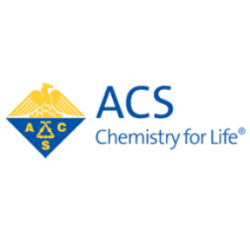Students test citric acid and cream of tartar with baking soda to investigate the question: Which reaction produces more gas? and How much of each reactant should be used to fill a bag with gas to make a cell phone float?
Objective
Students will design, test, modify, and optimize a device that uses a chemical reaction to produce enough gas to inflate a bag to make a cell phone float.
Key Concepts
- The goal of engineering is to design an object or process to solve a problem.
- To design a solution to a problem, engineers need to define the features that will make the object or process successful (criteria) and those that may interfere with the success (constraints).
- Engineering involves designing and testing a model or prototype and then modifying, improving, and optimizing the prototype based on the results of the testing.
- Designing a device that can make a cell phone float by using a chemical reaction requires testing, measuring, and refining the quantities of substances needed, and then modifying the materials to obtain an optimal design.
NGSS Alignment
- NGSS Standard: 3-5-ETS1-1
Define a simple design problem reflecting a need or a want that includes specified criteria for criteria and constraints on materials, time, or cost. - NGSS Standard: 3-5-ETS1-2
Generate and compare multiple possible solutions to a problem based on how well each is likely to meet the criteria and constraints of the problem. - NGSS Standard: 3-5-ETS1-3
Plan and carry out fair tests in which variables are controlled and failure points are considered to identify aspects of a model or prototype that can be improved.
Summary
This lesson begins with a design challenge: to invent a small device that uses a chemical reaction to prevent a cell phone from sinking if the phone accidentally falls into water. Rather than using a 5-E format, the lesson is organized according to the steps of the engineering design process:
Define the Problem
- Identify the Need
The lesson begins with a story about a cell phone that accidentally ends up in a lake. Rather than sinking and the phone being lost, could the phone be fitted or equipped with some type of device that would cause the phone float to the surface so it could be recovered?
- Consider Criteria and Constraints
As a class, students identify the features the device should have to be successful (criteria), as well as the factors that might limit or impede the development of a successful design (constraints).
Develop Possible Solutions
- Conduct a Test on Two Different Acids
Students prepare two solutions, with citric acid and cream of tartar, and test the two solutions with baking soda to see which produces a greater amount of gas.
- Make a Prototype
After students decide that citric acid is the better acid to use, they will combine water, citric acid, and baking soda in a small, zip-closing plastic snack bag to produce and trap carbon dioxide gas in the bag. Students test the inflated bag as a possible flotation device for a model cell phone made of clay.
Optimize the Design
- Improve your Prototype
Students will test smaller amounts of citric acid and baking soda to determine the optimum amounts that will produce enough gas to float the cell phone. Using smaller amounts of materials can reduce the overall cost, weight, and size of the flotation device and contribute to a better design. Students also look at videos of an actual flotation device and discuss and draw how some features from this product might be incorporated into a cell phone flotation device. As an optional extension, you may choose to have students continue designing their cell phone rescue device. Have students draw the device and include captions to describe the special features of their device.
Evaluation
Download the student activity sheet (PDF) and distribute one per student when specified in the activity. The activity sheet is meant as a formative assessment of student progress and understanding.
Back to Fifth Grade Lessons




